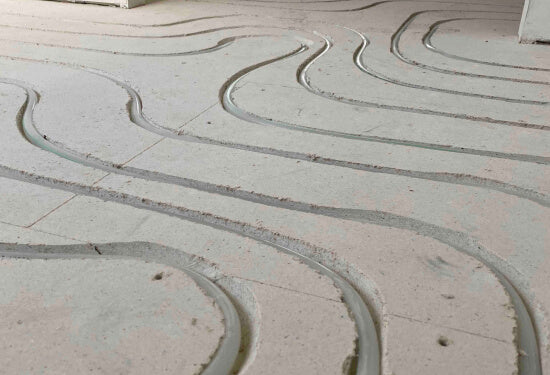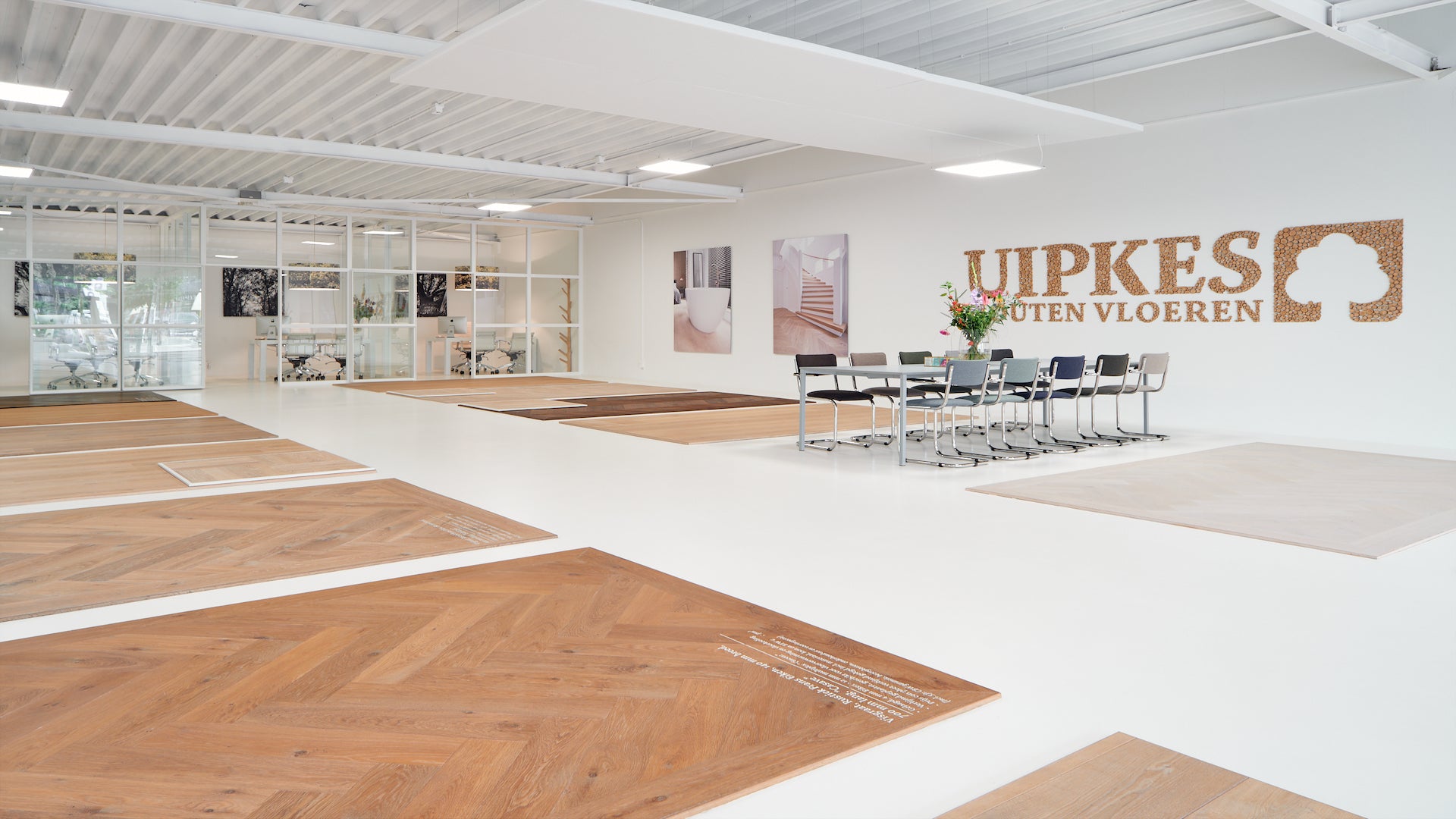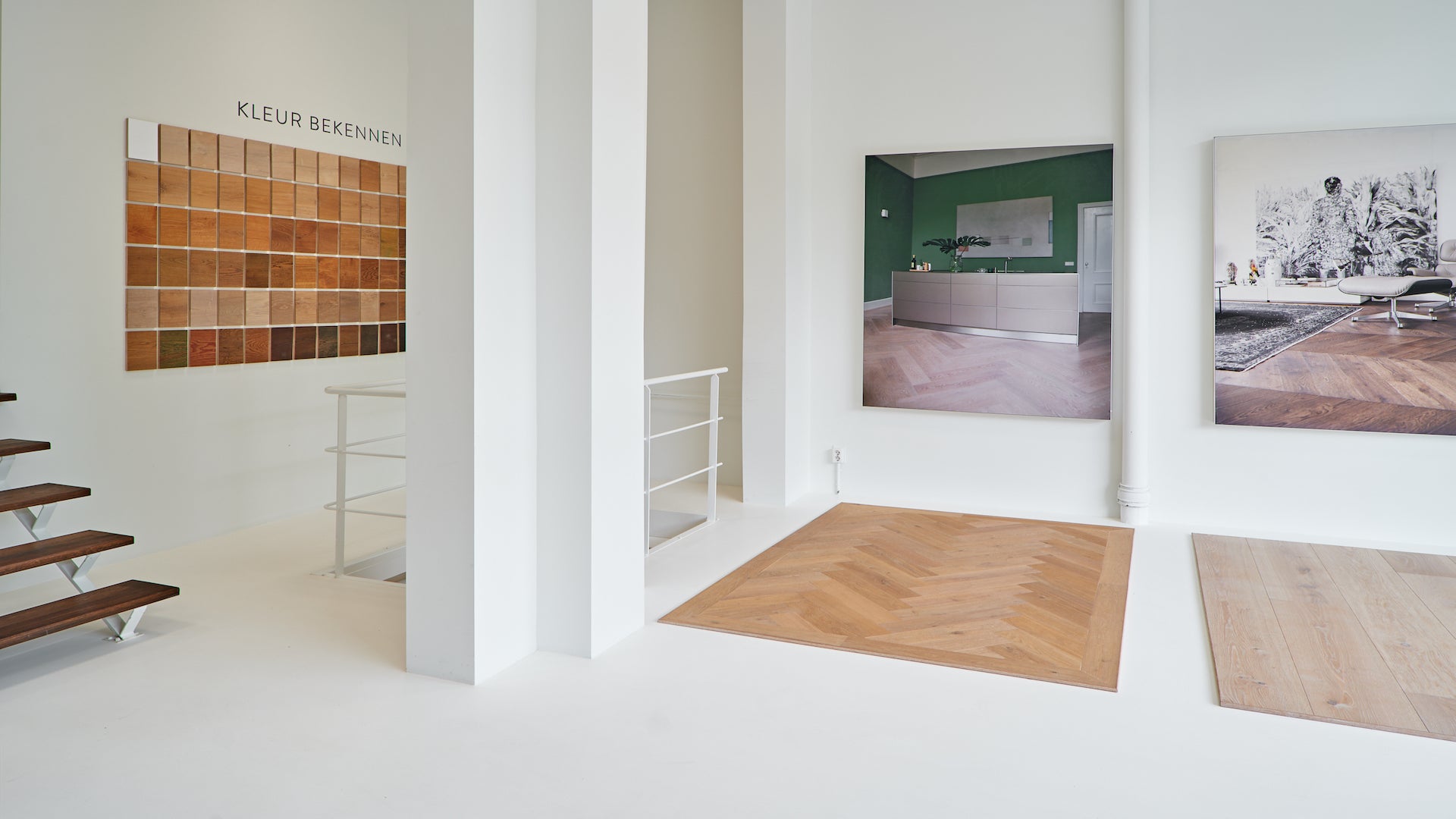Werking van hout

Bezoek de showroom
Wood is a versatile material, with endless applications. By nature it is beautiful, characteristic and warm. In addition, it is strong, durable and easy to machine. Wood is influenced by the soil, the climate and the structure of the tree from which wood comes.
These influences give wood such diverse properties. If you want to use wood, you must take into account properties such as: wood moisture content, shrinking and swelling, bulk and thermal properties.
Choice of wood
Ask yourself what type and quality of wood should be chosen for the intended application. When determining his choice, the wood user must take into account the appearance, workability, strength and durability that his material must meet.
Wood is often divided into hardwood and softwood. In the official meaning, hardwood is wood that comes from deciduous trees and softwood is wood that comes from coniferous trees. There are types of coniferous wood that are harder than some types of hardwood.
The right wooden floor for you
The employees at Uipkes Wood Flooring have a lot of knowledge about wood species and types of wooden floors that best suit your situation.
Please feel free to contact us for questions and advice or read more on our website about engineered wooden floors, herringbone floors and solid wooden floors and about the options for underfloor heating under your wooden floor.
Bezoek de showroom
Wood moisture content
Wood contains a lot of moisture. Even when the wood has been processed into a wooden floor, it still contains a considerable amount of moisture. In addition, wood continuously absorbs moisture from its environment and then releases moisture back into its environment. The wood moisture content is one of the most important properties of a piece of wood.
Shrinking and swelling
By 'working' of wood we mean the shrinking and swelling of air-dry wood as a result of normal changes in relative humidity. If the wood loses even more moisture from the fiber saturation point, this must come from the cell walls, causing them to deform.
The wood will then shrink. On the other hand, when wood absorbs moisture below the fiber saturation point, it swells. The speed and strength of these shape changes depend on the wood specie .
Lees ons magazine

Volumimetric mass
Many materials are referred to as relative density or specific weight. This is the ratio of the mass of a given volume of that substance to the mass of the same volume of water.
However, this quantity cannot be used well for wood because of the large variation in moisture content, which means that the mass of wood varies and the volume of wood is not always constant. With wood we therefore prefer to speak of volumimetric mass.

Heat properties
Wood has a low specific heat, about half that of stone. This property makes wood feel warm quickly. Floors, walls and furniture soon feel pleasant after turning on the heating.
Even though the stone wall behind it is still very cold. Because wood quickly takes on room temperature, a plank floors generally feels nice and warm.
Showrooms
-

Alphen a/d Rijn
Euromarkt 113
-

Amsterdam
Roelof Hartstraat 4
Frequently Asked Questions
What is the working of wood?
Wood action refers to the natural response of wood to fluctuations in humidity and temperature. Wood tends to expand and contract as environmental conditions change.
Why does wood work?
Wood undergoes action in response to changes in humidity and temperature of the planks. When the wood absorbs moisture it swells and when it loses moisture it shrinks.
How does the working of wood affect engineered wood flooring?
Engineered wood flooring consists of several layers of wood that are glued crosswise to each other, which increases stability. This means that engineered wooden floors can handle the working of wood better than solid wood floors. Some engineered wooden floors can even be installed tightly against walls without skirting boards due to the small amount of expansion and shrinking.
What are the advantages of engineered wooden floors compared to solid wooden floors?
Some advantages of engineered wood flooring are:
- Better dimensional stability: The cross-glued layers reduce the effect of the wood.
- Suitable for underfloor heating: Parquet flooring is more resistant to temperature fluctuations, making it a good choice for underfloor heating systems.
- Space efficient: Parquet flooring can be thinner than solid wood flooring, so it takes up less space.
- Wide range of finishes: Parquet flooring is available in different wood species , colors and finishes, offering many design options.
Do I have to take the humidity into account when installing engineered wood flooring?
Yes, it is important to check the humidity in the environment and ensure a suitable humidity level before installing engineered wooden floors. Wood is sensitive to moisture, and extreme fluctuations in humidity can cause problems such as warping or cracks in the parquet flooring. Performing the correct installation is crucial to ensure the durability of the floor.
How can I minimize the working of wood for engineered wood flooring?
Although engineered wood flooring is more resistant to impact of the working of wood than solid wood, there are some measures you can take to further minimize impact:
- Ensure a stable humidity in your home, preferably between 50% and 70%.
- Avoid large fluctuations in indoor temperatures.
- Use a suitable underlay and follow the installation instructions carefully.

